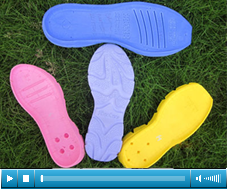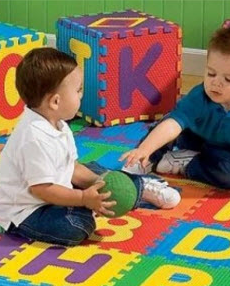Regulations (物性及检验规范) Thursday 17/10/2013
|
1.Light
Fastness |
Determined
according to CEI 02-59: “Light Fastness” by exposure of prints to daylight
and to the xenon lamp. Assessment is recorded in comparison with the ISO Blue
Scale for textiles. Rating 8 denotes the best, 1 the poorest degree of
fastness. |
||||||||||||||||||
|
2.Acid
Resistance |
Dipping
printed sample in 5% hydrochloride solution at room temperature for 30 min.
Assessment is determined according to the fading conditions of the test
samples. It can be divided into five grades.: Grade
2:Fair fading. Grade
3:Fading. Grade
4:Slight fading. Grade
5:No fading at all. |
||||||||||||||||||
|
3.Alkali
Resistance |
Dipping
printed samples in 2% caustic alkali solution at room temperature for 30 min.
The assessment is determined in the same way as Acid Resistance. |
||||||||||||||||||
|
4.Migration |
Placing
the test sample between two pieces of 40 phr PVC sheets and then clipping the
test set by two pieces of glasses ( ○:No migration
phenomenon. ╳:With significant migration phenomenon. |
||||||||||||||||||
|
5.Heavy
Metal Content |
According
to the test method of EN-71, part 3:1994 standard. The sample is dipped into
0.07N HCl aqueous solution and vibrated at
○:Has passed the
entire requirement of EN-71 standard. ╳:Could not pass the entire requirement of EN-71
standard. |
||||||||||||||||||
|
6.Analysis
of Azo Dye |
According
to German Bedarfsgegenstande-Verordnung test method. The sample is digested
in aqueous solution of sodium sulfite at ○:Under the
controlled limit. ╳:Higher than the controlled limit. |
||||||||||||||||||
|
7.Formalin
Test |
According
to the standard of DIN 53315, the sample is dipped into pure water and
vibrated at ○:Under the
controlled limit. ╳:Higher than the controlled limit. |
|
1. 耐旋光性 |
依据BS-1006标准方法测试,共分1~8级,1级最差,8级最佳。 |
||||||||||||||||||
|
2. 耐酸性 |
于室温下将油墨试片浸泡于5%盐酸水溶液中,经过30分钟后取出观察油墨试片变色及浸泡液着色的程度,其结果分下列五种情况: 4级:油墨试片轻微变色,浸泡液亦轻微着色。 3级:油墨试片明显变色,浸泡液亦明显着色。 2级:油墨试片严重变色,浸泡液亦严重着色。 1级:油墨试片完全变色。 |
||||||||||||||||||
|
3. 耐碱性 |
于室温下将油墨试片浸泡于2%氢氧化钠水溶液中,经过30分钟后取出观察油墨试片变色及浸泡液着色的程度,其判定方式同耐酸性判定标准。 |
||||||||||||||||||
|
4. 渗透性 |
将油墨试片与PVC白皮(DOP含量为40phr)利用5x ○:白皮无渗透。 ╳:白皮有渗透。 |
||||||||||||||||||
|
5. 含铅量 |
依据N-71 Part
3: 1994八大重金属检验标准,将样品置于0.07N之HCl溶液中,在
○:各重金属含量低于EN-71八大重金属检验标准。 ╳:重金属含量超出EN-71八大重金属检验标准。 |
||||||||||||||||||
|
6. 偶氮测试 |
依照德国Bedarfsgegenstande-Verordnung
之测试标准,将样品置于亚硫酸钠之 ○:通过检验标准。 ╳:未通过检验标准。 |
||||||||||||||||||
|
7. 福尔马林测试 |
依照DIN53315之检测标准,将样品置于纯水中,在 ○:通过检验标准。 ╳:未通过检验标准。 |

 Vietnamese
Vietnamese






